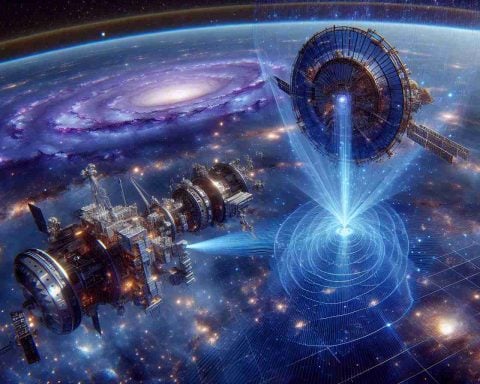- Tesla has increased Powerwall production to 1,500 units per day, a 50% boost from the previous milestone.
- Production occurs at Giga Nevada, a key facility for Tesla’s energy storage operations.
- The Powerwall 3 offers 13.5 kWh of energy storage and a peak power output of 30 kW, a 130% increase in capacity.
- Tesla provides Powerwall 3 Expansion Units, enhancing storage capacity up to 40.5 kWh.
- Tesla’s Megafactory and Shanghai facility aim for 80 GWh of annual energy storage production, advancing global energy solutions.
In a relentless drive that reflects the company’s visionary energy solutions, Tesla has ramped up the production of its Powerwall home batteries, hitting a staggering 1,500 units in a single day. This feat underscores a significant stride—a bold 50% increase—from the previous milestone of 1,000 units, which was achieved just months ago at the bustling Giga Nevada.
Giga Nevada, the ever-busy epicenter of Tesla’s energy storage production, funnels these Powerwalls to eco-conscious homeowners and forward-thinking businesses across the globe. The factory, an emblem of state-of-the-art manufacturing, attained its 1,000-unit-per-day record in November 2024. The swift acceleration to 1,500 units was a test of ingenuity and sheer will, accomplished during an uninterrupted 24-hour production blitz.
The heart of this achievement, the Powerwall 3, is crafted with enhanced efficiency and greater energy potential. While maintaining a familiar 13.5 kWh energy capacity, it soars to deliver 11.5 kW of continuous power, with peaks touching a formidable 30 kW. This marks a towering 130% surge in on-grid power capacity compared to its predecessor, the Powerwall 2.
To cater to growing energy needs, Tesla also offers the Powerwall 3 Expansion Units, each contributing an additional 13.5 kWh of storage and allowing a single Powerwall 3 to support up to three expansions, culminating in a robust 40.5 kWh.
As Giga Nevada continues its powerhouse performance, Tesla’s broader strategy unfolds with its dedicated Megafactory in Lathrop and the newly minted facility in Shanghai, pushing boundaries to generate 80 GWh of storage annually. This relentless pursuit plants Tesla firmly on the path to reimagining energy independence for a sustainable future.
Unveiling Tesla Powerwall 3: A Gamechanger in Home Energy Storage
Overview and Features of Tesla Powerwall 3
The Tesla Powerwall 3 represents a significant evolution in home energy storage solutions, offering more power and flexibility to adapt to today’s energy needs. While maintaining a capacity of 13.5 kWh, equivalent to the Powerwall 2, it delivers an impressive 11.5 kW of continuous power and can manage peak outputs up to 30 kW. This boost in performance is crucial for households and businesses aiming for increased energy independence and efficiency.
How Does Powerwall 3 Work?
The Tesla Powerwall 3 is designed to store energy from either the grid or renewable sources like solar panels during off-peak times. This stored energy can then be used during peak demand hours, enhancing grid reliability and providing homeowners savings by reducing dependency on the grid during high-cost periods.
Pros and Cons of Powerwall 3
Pros:
– Increased Capacity: Supports additional capacity with up to three expansion units.
– High Peak Power: Enhanced peak power management for high-demand appliances.
– Energy Independence: Offers a pathway to self-sufficiency for homes and businesses.
Cons:
– Cost: The price can be a barrier for some consumers.
– Installation: Requires professional installation, adding to the overall cost.
– Availability: High demand may lead to waiting periods for delivery.
Market Analysis and Forecast
The shift towards renewable energy and increasing energy costs drives the demand for home battery systems like the Powerwall 3. Tesla’s amplification in production capabilities positions them advantageously to capture a significant share of the growing market.
Predictions: Analysts foresee the global market for home energy storage reaching unprecedented heights, with growth spurred by innovations such as Tesla’s Powerwall 3.
Security and Compatibility Considerations
Tesla Powerwall 3 includes a range of security features designed to ensure safe operation. It’s compatible with a wide variety of inverter technologies, making it adaptable to both new installations and retrofits in existing solar systems.
Sustainability and Environmental Impact
Powerwall 3 contributes to sustainability by promoting the use of renewable energy and reducing reliance on fossil fuels. Coupled with Tesla’s solar energy products, it can significantly offset carbon footprints.
Recommended US and Global Links
– Tesla: For more information on products and services offered by Tesla.
– U.S. Department of Energy: Explore current energy-related polices and resources.
– International Energy Agency (IEA): Global insights on energy technology and policy.
Key Questions Answered
What is the cost of Tesla Powerwall 3?
Prices for the Powerwall 3 can vary based on location and installation costs. Prospective buyers should contact Tesla directly for detailed estimates and local installer listings.
What are typical use cases for Powerwall 3?
Common use cases include backup power solutions, day-to-day energy saving through time-of-use load shifting, and integration into grid service solutions.
What’s new about Powerwall 3 compared to its predecessor?
The Powerwall 3 offers a significant increase in on-grid power capacity with enhanced efficiency, making it more suitable for modern energy requirements.
Conclusion
Tesla’s Powerwall 3 is setting a new standard for home energy storage solutions. With its increased power capabilities and flexible storage options, it provides a powerful tool for consumers striving for energy efficiency and independence. As technology advances and energy policies evolve, systems like the Powerwall 3 will play a pivotal role in shaping the future of home energy solutions.













